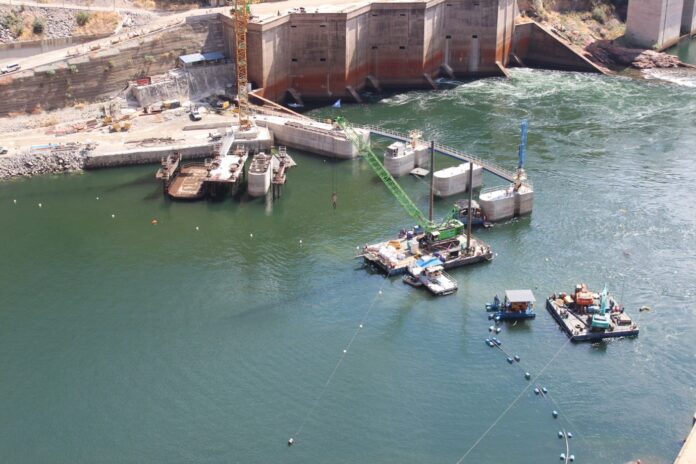
Talkmore Gandiwa/Itai Ndongwe
The Zambezi River Authority has cautioned Zimbabwe and Zambia against generating power above the 550mW levels which were accorded to the two countries water allocation from Lake Kariba.
The two countries power companies, Zimbabwe Power Company and Zesco Limited, share water allocation from Lake Kariba for power generation.
In a statement, ZRA chief executive Munyaradzi Munodawafa said the authority had requested the two countries to lower their power generation levels as the dam is under rehabilitation.
“The Authority has cautioned the two power utilities not to generate at higher levels (currently 550Mw for each Kariba power station) than that associated with the water allocation made for 2022.
“The Authority requested Zesco Limited and ZPC to reduce Power Generation levels for six (6) hours only, on a few selected dates to facilitate coffer dam construction works under the plunge pool reshaping sub-project of the Kariba Dam Rehabilitation Project (KDRP),” he said.
Munodawafa, however, said the power utilities were expected to implement measures that would mitigate the resulting reduction in power generation levels at Kariba.
The rehabilitation of the plunge pool at Lake Kariba Dam wall is reportedly at an advanced stage and includes the pool reshaping sub-project.
The project is expected to be complete by Tuesday, January 25 this year and this could signify the end of ZRA’s request to the two power generation utilities.
Munodawafa said remaining works of the KDRP will not result in the two utilities seeing reduced generation levels at their respective Kariba power stations.
“The KDRP is scheduled to be completed by 2024 and is aimed at assuring the long-term safety and reliability of Kariba dam,” he said.
ZRA is preparing to undertake the hydrological review for the first quarter of 2022 that will further inform the water allocation for power generation operations at Kariba.
Though the rains in 2021 were received late, Kariba Dam has increased water levels by 21% from 478.23m to 478.47m due to the improved rains received in early January 2022.
Meanwhile, Zimbabwe projected that the country will be exporting electricity by early January 2022 due to anticipated above normal rains that will increase the water levels in Lake Kariba.
ZRA has also allocated an increased 45 billion cubic meters (BCM) to be shared equally between ZPC and Zesco Limited for power generation.
“The allocation was, among other factors, informed by the predictions of Normal to Above Normal Rainfall provided by the regional weather and climate experts mentioned above but will be subject to a downward review where the rainfall season turns out to be a drought period to conserve the stored usable water and support power generation operations into 2023,” he said.
The reduced inflows into Lake Kariba were recorded during the period October 2021 to early January 2022 thus the lower levels of the dam.
“The recent steady increase in rainfall activity and associated increase in Zambezi River flows as well as the resultant Lake Kariba inflow, the Lake Level rose from 478.23m recorded on 7th January 2022 to 478.47m recorded on 17th January 2022, positioning the lake 2.97 meters above the Minimum Operating Level (MOL) of 475. 50m,” Munodawafa said.
He said the increase translates into 13.43BCM or 21% of stored usable water or live storage.
Nn the same date last year, the Lake Kariba levels was slightly higher at 478.63m with 14.17 BCM or 21.87% of usable storage, with the lake level being 3m above the MOL.
“As per the historical hydrological trend but compounded by the delayed onset of the 2021/2022 rainfall season, the Lake levels receded during the last quarter of 2021 into the first week of January 2022,” Munodawafa said.
The Zambezi River Authority is a Bi-National organization mandated to contribute to the economic, industrial, and social development of the Republics of Zambia and Zimbabwe by obtaining the greatest possible benefits from the natural advantages offered by the waters of the Zambezi River (between Zambia and Zimbabwe) through the most economical and effective means of providing water for generation of electricity and for other purposes which the Contracting States may decide upon.








